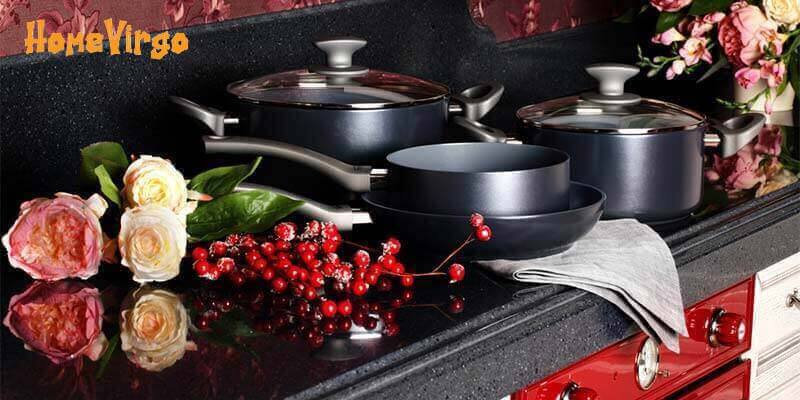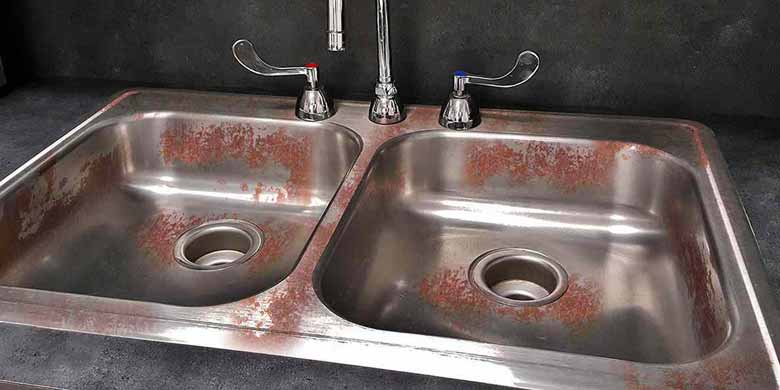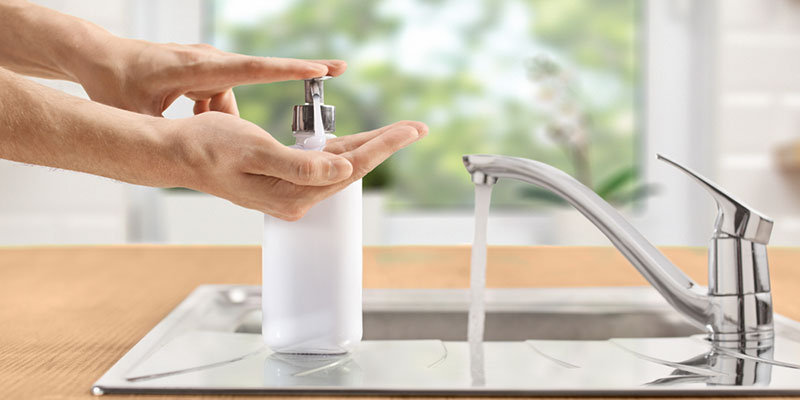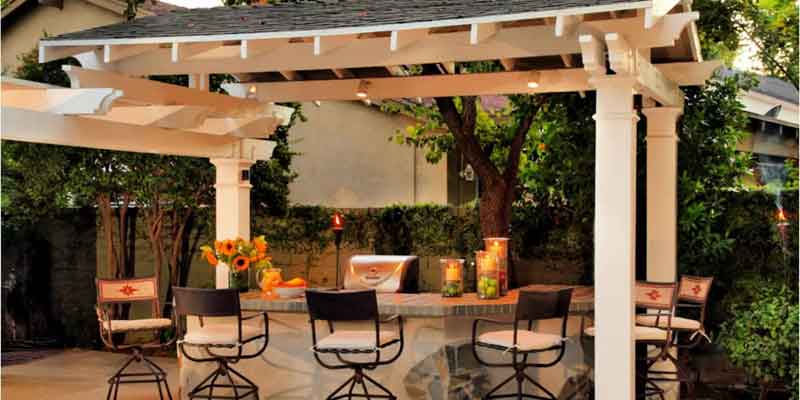What Is The Safest Cookware?

Safest Cookware
There are numerous types of cookware in the market. So, yes, it’s okay to get a bit confused about which one fits your needs the most. While talking about the needs, I think it’s the most important to know whether your cookware is safe or not.
So, if you are here to know what is the safest cookware, you are welcome. This page contains your answer along with detailed information about the safest cookware as well.
So, before you purchase new cookware, go through the whole article and purchase the safest one for you! Ready to dive in? Hopefully, yes!
Why Should You Be Concerned?
Prior to delving into the types of cookware and deciding which one is the safest, you better know what can happen if you end up choosing unsafe cookware. The chemicals in cookware’s material have a noteworthy effect on our health.
For example, people face fertility issues, thyroid problems, even cancers for the harmful chemicals leaching into food from the unsafe cookware. There’s a study concerning 14 non-stick pans that shows- 79% of the non-stick pans come with PTFE coating which is a source of toxin.
So, you should be serious about the health concerns because it is your everyday kitchen utensil. In case, your cookware is coated with something toxic or leach into the food, you are better starving than eating toxic.
For this, you need to know about the safest cookware options that might help you to go to the right conclusion.
How to Choose the Right Type of Cookware
It’s a part of tips and tricks you should read before you purchase cookware. You should go through this question-answer part first.
What About the Cleaning Requirements?
You have to make sure that your cookware is safe from bacteria buildup and the chances of foodborne illness. To make it sure, you can’t skip the part- cleaning your cookware properly after each use. And, if the safest cookware exists, even then you can become sick if you don’t clean it correctly.
The way of cleaning and care for your cookware depends on which material it is made of. You will have to follow an individual way for a certain type of cookware. So, pick carefully and make sure it’s worth it.
Will It Bear the Everyday Use?
We want to try our best to last things for a long time. Sometimes, it may not be an option to invest in the most durable, highest-quality cookware, but you can take some steps to let them last longer even when money is a concern.
For example, you may reduce the level of wear and tear of your cookware and let it last longer. You can pair it with the right type of utensils- using wooden spoons and spatulas is one great way to make it happen. Because wooden utensils reduce the risks of scratching your nonstick cookwares’ coatings.
Is There any Health Risk (Evidence-based)?
That’s one of the big questions when we are talking about the safest cookware. Also, the answer to this question is dependent on your health history and perspective. If you are sensitive to nickel, copper and stainless steel cookware may not work great for you although they are considered safe.
And, people who have hemochromatosis (a health condition) should stay away from cast iron cookware because the excessive iron that comes from this cookware can result in proving too much iron.
How This Product Was Manufactured?
Do you know that your pots and pans can significantly affect the environment by their waste hazard? You should use the products that are manufactured by following the ‘green’ way.
And, purchase products from a company that is transparent about the process of manufacturing the products, it may cost a bit much, but you will get a product that lasts long.
Types of Cookware- with Their Pro-Con List
Here we have compiled every necessary information about the most common types of cookware in the market.
Stainless Steel Cookware
Stainless steel is a mixture of chromium and nickel. Both of the elements work great to stop rust, resist corrosion, as well as prevent food reactions. However, stainless steel is not an amazing heat conductor.

But there are a lot of stainless steel cookware that comes with copper or aluminum cores to make sure there’s an even heat distribution. So, you are going to have a long list of benefits by using stainless steel cookware that is not expensive.
Benefits
- Comes with smooth and non-porous surfaces which are free of any chemical coatings.
- It’s safe on every type of stovetop and okay for a lifetime of daily use.
- Stainless steel cookware is totally okay for using acidic foods and more sanitary compared to a non-stick one.
- Requires little, almost no maintenance.
- Dishwasher-safe.
- Affordable but a higher-end costs more.
Drawbacks
- It’s not non-stick that may be an issue for you.
- You can’t use it in the microwave.
- If you scratch the cookware using utensils, there’s a chance of nickel leaching into your food.
Cast Iron Cookware
The best possible non-toxic pans are made of iron, they work like a champ for heat retention, high-temperature searing, and durability. And, cast iron cookware doesn’t stick if you season them.
If you are wondering what seasoning does mean, well, it’s a coating of fat or oil to make your cookware non-stick and glass-like. In general, cast iron cookware comes with pre-seasoning using vegetable oil.

However, if your cookware doesn’t come with seasoning, no problem, it’s pretty easy to make it non-stick. You only need to follow these simple steps below:
- Use brush soapy water, better to be warm, to clean the pan’s surface. If you find there is rust, it’s a good idea to use a scouring pad.
- Take any of the cooking oils and apply an even, thin layer of the oil to your cookware.
- Now, it’s time to bake. Put your cookware in the oven. Make sure the cookware is on top of the rack, placed upside down.
- On the bottom shelf, place a piece of aluminum foil so that it catches any drop of excess oil that comes off the pan.
- Now, set the temperature at (450-500)℉ and bake your pan for 1 hour.
That’s it! An interesting part is, you will create the seasoning automatically from the fats or oils in your food every time you cook. However, when you use a big amount of dish soap, this will be killing the seasoning.
Benefits
- These pans are non-stick but yes, without chemicals.
- They are perfect for searing, boiling, braising, sauteing, baking, and whatnot!
- Cast iron cookware is able to go with a very high heat, yes very high, even up to 1500℉.
- You can have them at a reasonable price.
- They hold heat just like a sponge.
Drawbacks
- Cast-iron cookware is not dishwasher-safe.
- You may find it’s too heavy.
- They are not microwave-safe as well.
- Take time to heat.
- There’s a risk of leaching iron into your foods. However, in case you are anemic, it turns out, it will help you!
Solid Ceramic Cookware
It’s a non-toxic, super safe, clay cookware that is nothing but a natural quartz sand surface. This cookware is eco-friendly and durable enough that may last for years. So, yes, ceramic is made from earthen elements like clay, water, and powders.

They go through a process where the clay is shaped into the form that manufacturers want.
Benefits
- There’s no risk of leaching chemicals into the foods because this cookware is non-reactive.
- Microwave-safe.
- No non-stick chemicals come with a smooth, glass-like surface.
- Totally safe for oven, broiler, grill, and stovetops.
- Freezer and refrigerator safe.
- Dishwasher-safe.
- Comes with a non-scratch surface.
- Can hold heat well.
- The safest possible cookware that you can handle with high heat.
Drawbacks
- Slow to heat.
- Can break so easily when dropped.
- Less stick, yes, but ceramic also requires some oil for releasing food.
- Costly, however, it’s worth the pricing.
Ceramic-Coated Cookware
If you compare stainless steel vs. ceramic, you will see several benefits are common in them, but ceramic-coated cookware does not stick. Producers found this non-toxic, healthy cookware from a layer of anodized aluminum. Anodized never reacts with foods actually.

Also, there is a non-stick coating on the top which is totally ceramic-based (PTFE and PFOA-free pan).
Therefore, the food you cook only will touch ceramic and the core of aluminum will be heating up, more evenly. That’s how a non-stick cookware will be toxin-free. Also, it’s easy to clean.
Benefits
- Versatile, you can use this cookware in the ovens, stovetops, and broilers.
- Non-stick, yet free from any kind of unhealthy coatings.
- Easy to clean.
- Dishwasher-safe.
- Provides even heating because it is quick and efficient.
- Non-reactive, no need to worry about the chemicals leaching into your foods.
Drawbacks
- There’s a chance of the non-stick surface wearing out.
- Not microwave-safe.
- Yes, it’s dishwasher-safe, yet. It’s best to simply hand wash it for preserving the ceramic coating.
Porcelain Enamel Cookware
The question to ‘what is porcelain enamel cookware?’ is simple- it’s just a coating of cast iron and enameled ceramic. The surface is glass-like and works great to protect the iron from rust.

People love the heat retention and durability of cast iron that is mixed with a non-stick, all-natural coating.
Benefits
- No need to season it, it’s naturally non-stick.
- Safe on every type of stovetop and you can bake, braise, sear, broil, roast, bake, and fry as well with this cookware.
- Comes with amazing heat retention.
- Untainted by moisture and acidic foods.
- Dishwasher-safe and easy to clean.
Drawbacks
- Slow to heat.
- Costly, yet, worth the pricing.
- Not microwave-safe, sorry.
- You can’t use abrasive scrubbers or metal utensils (preserving non-stick surface fact!).
Glass Cookware
And, here comes another healthy and safe cookware material. Also, serving food in glass cookware means you save cleanup time as well.

Glass is totally free from any toxic chemical, it stores food safely, does not react to acidic foods, and it’s super hygienic. And, you are going to love watching your food through the glass. Therefore, it will be easy to track the cooking process as well as prevent the foods from burning.
Benefits
- Totally safe on electric and gas stovetops, in the oven, under a broiler, and in a microwave as well.
- Non-reactive.
- Freezer and refrigerator-safe.
- Amazing way to serve your foods.
- Glass cookware safely stores the food.
- See-through opportunity.
- Stain-resistant.
- Dishwasher safe and quite easy to clean.
Drawbacks
- Expensive, especially if you want a high-quality set of glass cookware.
- Will break easily if it is exposed to an extreme temperature or just it’s dropped.
- Glass cookware does not heat evenly all the time, however, it depends on the thickness.
Carbon Steel Cookware
Carbon steel cookware possesses almost the same characteristics as cast iron. They are non-toxic, healthy, and there is 99% iron and only 1% carbon in carbon steel cookware.

However, it’s not like there’s no difference between them- a carbon steel cookware is less heavy than a cast-iron one.
Benefits
- Non-stick, naturally.
- Versatile cooking.
- Very affordable.
- Heats much quicker than a cast iron cookware.
- Lighter and thinner than a cast-iron cookware.
- Tough as nails.
Drawbacks
- Not microwave-safe.
- Not dishwasher-safe.
- Cannot hold as much heat as cast iron can.
What Is the Safest Cookware?
Well, after reading about all the different types of cookware, you probably got the answer, right? We talked about all the safe and healthy cookware in the market along with their pros and cons.
Now, you decide which one is an ideal fit for you but hey, stay away from these materials: Teflon, PFOA, nonstick, and PTFE.
Conclusion
Hopefully, you have got your answer to ‘what is the safest cookware?’, right? Choosing the right type of cookware takes time and effort but we made your path easier.
No matter which type of cookware you pick, make sure you know how to use, clean, and maintain them. This is how you can have a long journey with your kitchen utensils.
Good Luck with It!



